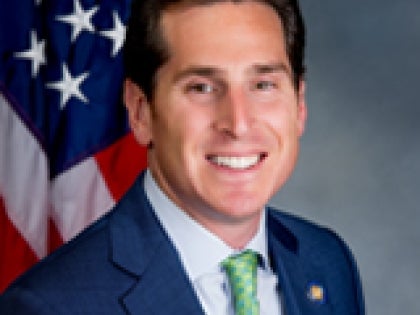
PSC to delay decision on who will pay for bulk of wind-farm upgrades
The state Public Service Commission on Thursday granted LIPA's request for a delay in the final decision over who will pay the greater cost for grid upgrades for offshore wind power as opposing forces weigh in on a decision that could leave Long Islanders with the biggest tab.
In an order issued Thursday, the commission said it "shares the procedural concerns raised" by LIPA and Con Edison in granting a "limited stay" of the order, "pending a final decision on the petitions for rehearing filed" by LIPA, Con Edison and other downstate utilities, all of which argued they would be disproportionately impacted by the rule. The PSC has said 75% of the costs should be borne by those who will benefit most from the upgrades, in this case downstate utilities and their customers.
The ruling follows a week in which stakeholders weighed in on the PSC order. A state senator from Long Island said the order would leave downstate ratepayers "resentful," but an energy user group sided with the commission's finding that LIPA and Con Edison users should pay 75% of the costs because they will benefit more from the grid enhancements.
LIPA in a statement said, "The Commission’s decision today delayed implementation of the cost allocation portion of its order on new electric grid upgrades for offshore wind to allow additional time for the issue to be more thoroughly vetted."
LIPA and Con Edison had filed objections to the PSC’s order in April, saying the upgrades will benefit ratepayers statewide and thus the billions in costs should be shared evenly by all state ratepayers.
State Sen. Todd Kaminsky (D-Long Beach), who sponsored and helped pass Gov. Andrew M. Cuomo’s signature 2019 climate legislation, the Climate Leadership and Community Protection Act, which mandates the influx of green-power sources such as wind, argued in a letter this week to the PSC that the order "unfairly burdens downstate ratepayers by placing a majority of the cost on them, despite the fact that the benefits of green energy infrastructure upgrades are shared by all New Yorkers."
Kaminsky called for the PSC order to be "voided," arguing it’s not based on "any factual analysis."
Big energy group weighs in
But the group of big power users, the Multiple Intervenors, last week weighed in against LIPA’s recent request for a rehearing on the state order, saying that spreading the costs evenly among all state ratepayers "would not be fair." They argue the downstate region, from Long Island to Westchester, long-troubled by energy bottlenecks, will derive benefits beyond the upgrades designed to move offshore wind power from Long Island to upstate. LIPA says upstate ratepayers will benefit too, by lower costs for special renewable-energy credits that utilities must buy as green energy proliferates to help subsidize the costs.
"There is no question that certain regions of the state will experience economic benefits from the development of new transmission, while other regions will experience no such economic benefits, and may in fact experience higher energy costs as a result" of the hundreds of millions or billions of dollars in grid upgrades proposed for the Long Island and New York City regions, the group, whose members include 60 "large, industrial, commercial and institutional energy consumers" with facilities throughout the state. The group’s website doesn’t specifically name any members and a message to the group wasn’t answered.
PSC order: 'Beneficiaries' should pay 75%
The PSC order asserts that "economic beneficiaries" of the grid upgrades should pay 75% of the costs of the upgrades, which could include a new 345,000-volt transmission line from Long Island to New York City and upgraded or new power lines on Long Island, which costs expected to exceed $1.5 billion, Newsday has reported.
The state in its order questioned the need for some of the projects LIPA maintains would be needed for new offshore wind power, including a new 345,000-volt line from Melville to Glenwood Landing, but LIPA, in a response to Newsday questions this week, said if the projects are rejected it may propose them as part of later-phase grid upgrade.
Kaminsky in his letter to the PSC argued that the climate law he fought for "does not set regional targets and expects every part of the state to contribute toward its statewide goals," thus justifying an even, statewide share of the costs.
"Placing such a high share of the cost on one region will diminish the economic feasibility of the projects and potentially hamper our state’s efforts to meet our goals," Kaminsky wrote to the PSC.
Worse, he wrote, "I fear that downstate residents may grow resentful at the cost they pay for them" while support for a green-energy economy is "more important than ever."
But the intervenor group contended otherwise.
"The fact of the matter is that the development of largescale transmission projects costing in the hundreds of millions or billions of dollars can have disparate economic impacts on various geographical regions," the group wrote, calling for LIPA and Con Edison’s arguments to be thrown out.
